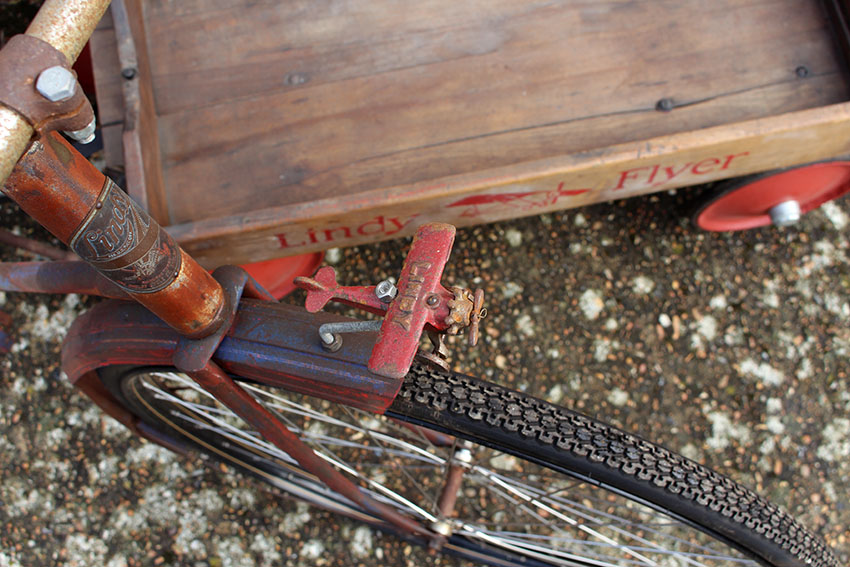
On May 20, 1927, 25-year-old pilot Charles Lindbergh strapped into his famous airplane, “The Spirit of St. Louis”, and took off on the first ever non-stop flight from New York to Paris. The 33.5-hour crossing vaulted Lindbergh to international stardom.
In the years before Charles Lindbergh’s New York to Paris flight, dozens of other pioneering aviators completed airborne crossings of the Atlantic. Most made the journey in multiple stages or used lighter-than-air dirigibles, but in 1919, British pilots John Alcock and Arthur Brown famously flew nonstop from Newfoundland to Ireland in a Vickers Vimy biplane before crash landing in a bog. Lindbergh’s major achievement was not that he was the first person to cross the Atlantic by airplane, but rather that he did it alone and between two major international cities.
Almost as soon as Lindbergh touched down after his historic 1927 flight, US manufacturers of every item imaginable started to prepare and market their ‘Lindy.’ A few were licensed by Lindbergh, but the majority were not. Shelby, a leading cycle maker, created a new line of ‘Lindy’ bicycles, which ran for several years with various models and specifications.
Because of the licensed Lindy bicycle, if another cycle company tried to cash in on the name they would be sued not by Lindbergh’s agents but by Shelby. As cycle companies were professional litigants, the Shelby was the only full-size bicycle to bear his name. Although the ‘Lindy’ was the first ‘character bicycle’, this was not actually the first celebrity to feature on a riding toy: as a result of his association with the ‘Black Bottom’ dance craze, ‘Felix the Cat’ adorned some tot-sized children’s tricycles in the early 1920s. Character bicycles became particularly popular after World War 2, with models featuring, among others, Donald Duck, Gene Autry and Hopalong Cassidy; the two cowboys also had velocipede tricycle versions.


1929 Shelby Lindy Girls Bicycle
28″ Wheels
























1919: THE FIRST NON-STOP ATLANTIC FLIGHT

ALCOCK & MOORE’S VICKERS VIMY: First Non-stop Atlantic Flight, 1919
Charles Lindbergh made the first SOLO non-stop flight across the Atlantic, but his was not the first crossing. That accolade went to Alcock and Brown in 1919.
In 1913, Britain’s Daily Mail offered a prize of £10,000 to the first aviator to cross the Atlantic. However, the competition was suspended after start of World War I. Actually it was unlikely anybody could have made the crossing in 1913, but by the end of the war, aviation technology had improved significantly. In late 1918, the competition resumed, stipulating that the flight must be made in less than 72 hours. With fighting still fresh in the minds of the British, a new rule prevented teams of “enemy origin” to enter.
By the spring of 1919, several teams gathered in St. Johns, Newfoundland, vying to be the first to cross the Atlantic and collect the prize. There were so many teams that Alcock and Brown had a difficult time finding a suitable field they could use as a runway for their flight.
Their Vickers Vimy was a large twin engine bomber developed for war use but too late for World War I. With a wingspan of more than 67 feet, the biplane was powered by a pair of 12-cylinder Rolls-Royce engines. It was modified by removing the bomb racks and adding extra fuel tanks to carry 865 gallons for the flight. The pilot and navigator sat in an open cockpit at the front of the airplane.
After a few days waiting out bad weather, the decision was made to fuel the airplane at a new field and make an attempt for the first nonstop crossing of the Atlantic. On 14 June, Brown radioed the message, “All well and started”. Unfortunately, it was their last radio message, as the wind-powered generator failed shortly after, and the duo was left without a radio for the remainder of the flight.
With a gentle crash at 8:40 a.m., they completed the first nonstop flight across the Atlantic. Accounts vary, but the flight of approximately 1,890 miles across the shortest part of the Atlantic took around 16 hours, averaging roughly 118 mph. They were awarded the prize money in London by the British Secretary of State for War and Air, Winston Churchill, and were later knighted by King George V.
Many more airplanes and airships were flown across the Atlantic, with a variety of routes. In 1927, Lindbergh made his historic non-stop flight between New York and Paris to win the Orteig Prize. He was the 19th person to cross the Atlantic non-stop in an airplane, but the first solo pilot.





















1929 SHELBY ‘LINDY’ GIRLS BICYCLE v 1929 ‘LINDY FLYER’ COASTER WAGON

TO SEE THE
1929 ‘LINDY FLYER’ COASTER WAGON
PLEASE CLICK HERE


















































